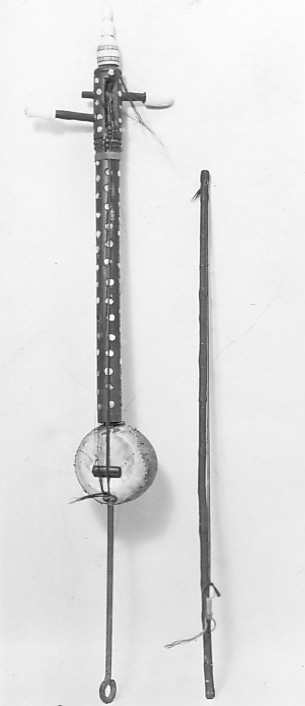Rabāba
Rabāba or kamānja agūz, a spike fiddle used today to accompany folk singers. Two horsehair string pass over a coconut resonator covered with skin. The resonator can be turned on the spike to facilitate bowing. Once an integral part of the Arabic ensemble, it is today replaced by the violin and used only to accompany folk singers. The player may either sit cross-legged on the ground with the instrument to the front or on a chair with the spike resting on the chair between his legs or in a cup on his knee. Rabāba also refer to a quadrangular single-string instrument used in Saudi Arabia and the term kamānja agūz is an obsolete Egyptian name derived from the Persian term for this type of bowed lute.
Due to rights restrictions, this image cannot be enlarged, viewed at full screen, or downloaded.
This artwork is meant to be viewed from right to left. Scroll left to view more.



